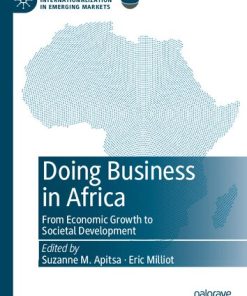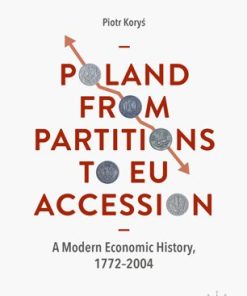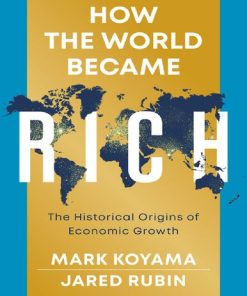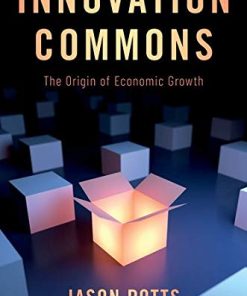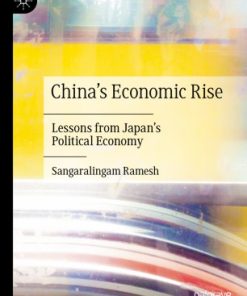(EBOOK PDF)Europe’s Growth Champion Insights from the Economic Rise of Poland 1st edition by Marcin Piatkowski 9780192506399 0192506390 full chapters
$50.00 Original price was: $50.00.$25.00Current price is: $25.00.
Europe’s Growth Champion Insights from the Economic Rise of Poland 1st edition by Marcin Piatkowski – Ebook PDF Instant Download/Delivery: 9780192506399, 0192506390
Full download Europe’s Growth Champion Insights from the Economic Rise of Poland 1st edition after payment
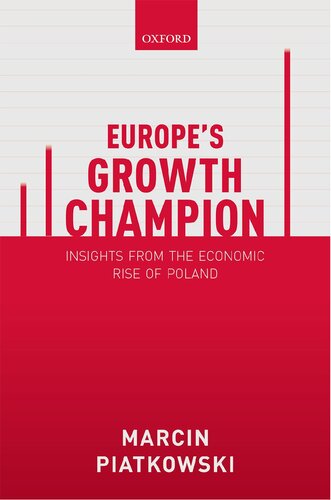
Product details:
• ISBN 10:0192506390
• ISBN 13:9780192506399
• Author:Marcin Piatkowski
Europe’s Growth Champion
Insights from the Economic Rise of Poland
What makes countries rich? What makes countries poor? Europe’s Growth Champion: Insights from the Economic Rise of Poland seeks to answer these questions, and many more, through a study of one of the biggest, and least heard about, economic success stories. Over the last twenty-five years Poland has transitioned from a perennially backward, poor, and peripheral country to unexpectedly join the ranks of the world’s high income countries. Europe’s Growth Champion is about the lessons learned from Poland’s remarkable experience, the conditions that keep countries poor, and the challenges that countries need to face in order to grow. It defines a new growth model that Poland and its Eastern European peers need to adopt to grow and catch up with their Western counterparts. Poland’s economic rise emphasizes the importance of the fundamental sources of growth- institutions, culture, ideas, and leaders- in economic development. It demonstrates that a shift from an extractive society, where the few rule for the benefit of the few, to an inclusive society, where many rule for the benefit of many, can be the key to economic success. *IEurope’s Growth Champion asserts that a newly emerged inclusive society will support further convergence of Poland and the rest of Central and Eastern Europe with the West, and help to sustain the region’s Golden Age. It also acknowledges the future challenges that Poland faces, and that moving to the core of the European economy will require further reforms and changes in Poland’s developmental character.
Europe’s Growth Champion Insights from the Economic Rise of Poland 1st Table of contents:
Cover page
Halftitle page
Endorsements
Title page
Copyright page
Dedication page
Acknowledgements
Rights and Permissions
Table of Contents
List of Figures
List of Tables
List of Boxes
Introduction
1. Fundamental Sources of Growth: Institutions, Culture, and Ideas
1.1. Fundamental Sources of Growth
1.2. What are Institutions and how do They Drive Economic Growth?
1.3. Extractive Versus Inclusive Institutions
1.4. Where do the Good Institutions Come From?
1.5. The Extended Institutional Framework of Development
1.6. Conditions for Shifting from an Extractive to an Inclusive Society and Vice Versa
1.7. How to Move From Extractive to Inclusive Societies: Policy Implications
1.8. The Importance of Culture
1.9. How Culture Affects Institutions
1.10. Ideas, Ideologies, and Individuals
1.11. Conclusions
2. From Black Death to Black Hole
2.1. The Rise of Western Europe and Decline of Central and Eastern Europe
2.2. Poland’s Sixteenth Century Mythical ‘Golden Age’
2.3. Sources of Poland’s Backwardness
2.4. Why did Poland Create Extractive Institutions?
2.5. Why Poland’s ‘Democracy’ did not Lead to Economic Development
2.6. The Role of Culture, Values, and Ideologies in Poland’s Backwardness
2.7. Conclusions
3. What Black Death was to Western Europe, Communism was to Central and Eastern Europe
3.1. What Communism was all About
3.2. Why Communism Collapsed
3.3. Poland was a Communist Growth Laggard
3.4. Why Communism was not all Bad
3.5. How Communism Destroyed Feudalism
3.6. What if Poland had Remained Capitalist in 1945?
3.7. Conclusions
4. Poland’s Transition Success Story
4.1. Measurement of Economic Performance and Prosperity
4.2. Measurement of Well-Being and Happiness
4.3. Poland’s Economic Performance Since 1989
4.4. Uniqueness of Poland’s Success
4.5. Poland’s Inclusive Growth
4.6. Drivers of Inclusive Growth
4.7. Evolution of Well-Being, Quality of Life, and Happiness
4.8. Failures of the Polish Transition
4.9. Conclusions
5. Drivers of Poland’s Successful Transition
5.1. ‘Shock Therapy’ Versus Gradualism
5.2. ‘Shock Therapy’ in Poland after 1989
5.3. Criticism of ‘Shock Therapy’
5.4. ‘Shock Therapy’ or ‘Shock Failure’?
5.5. After the ‘Shock Therapy’: Policy Corrections and Further Reforms
5.6. What Made Poland More Successful Than its Post-Communist Peers?
5.7. Benefits of Delayed Privatization
5.8. Could Poland Have Grown Faster?
5.9. Conclusions and Lessons Learned
6. Fundamental Sources of Poland’s Growth: The Role of Institutions
6.1. Which Institutions Drove Poland’s Transition?
6.2. Poland’s Institutional Quality in the Long-Term Perspective
6.3. The Impact of Institutions on Growth in Poland
6.4. The Role of the EU Accession in Institution-Building
6.5. The Impact of the EU on Income Convergence
6.6. Drivers of Good Political and Economic Institutions
6.7. Conclusions
7. The Role of Culture, Ideas, and Leadership
7.1. Impact of Culture on Institutions and Growth in Transition Economies
7.2. Differences in Culture Between CEE and the West
7.3. Culture and Economic Performance in Poland
7.4. Evolution of Culture Since 1989
7.5. The Role of Leadership
7.6. Ideas and Ideology
7.7. Conclusions
8. Will Poland’s Success Continue? Projections, Scenarios, and Risks
8.1. Poland’s Growth Prospects
8.2. Upside Risks to the Growth Scenarios
8.3. Downside Risks
8.4. Economic Literature and the Drivers of Economic Growth
8.5. The Importance of Rankings
8.6. Conclusions
9. The New Growth Model for Central and Eastern Europe: ‘The Warsaw Consensus’
9.1. Does Poland Need a new Growth Model?
9.2. The ‘Warsaw Consensus’
9.3. Implementation of the ‘Warsaw Consensus’
9.4. Impact of the ‘Warsaw Consensus’
9.5. Conclusions
10. Conclusions and the Way Forward
10.1. The Future
References
Index
Read More
People also search for Europe’s Growth Champion Insights from the Economic Rise of Poland 1st:
europe’s growth champion: insights from
europe’s growth champion
europe growth
europe growth outlook
europe growth rate
Tags:
Europe Growth Champion,Economic Rise,Poland Marcin,Marcin Piatkowski
You may also like…
Politics & Philosophy - Anthropology
Business & Economics
History - European History
Civil War in Central Europe, 1918-1921: The Reconstruction of Poland Jochen Böhler
Psychology - Cognitive Psychology
Business & Economics - Mathematical Economics
Business & Economics - Economics
How the World Became Rich: The Historical Origins of Economic Growth 1st Edition
Business & Economics - Mathematical Economics
Business & Economics - Mathematical Economics
Politics & Philosophy - Government & Politics
China’s Economic Rise: Lessons from Japan’s Political Economy 1st edition Sangaralingam Ramesh





